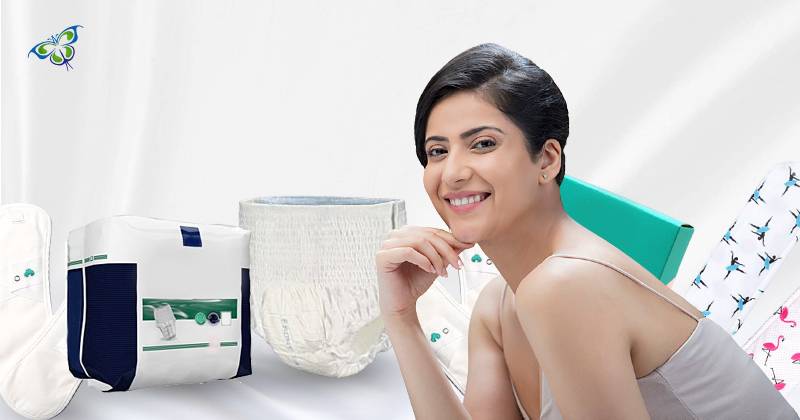
Hello
Select Address

Why do most people find adult incontinence to be embarrassing? Especially men do, and they are just not ready to go for adult diapers! Possibly, the use of diapers at an adult age seems to be a little uncomfortable. Yes, that is precisely the case with most people – both men and women; they find the use of diapers to be self-demeaning!
If you're still under the notion that the age-old adult diapers are the only thing in the market to deal with your incontinence, you are wrong! Today, there is a range of incontinence products that can efficiently manage your bladder incapability issues. Adult protective underwear is one of the most modern and accessible among them. Incontinence may be of different types – it could be the experiencing of occasional drips, sudden gushes, or even a full bladder loss!
This post is intended to throw some light on the different types of incontinence issues and enlist some of the modern-day products that are meant to deal with the problem.
An overview of urinary incontinence
In simple words, urinary continence refers to the loss of bladder control. That said, the malfunction has different degrees of complications depending upon the causes. It could be a slight leaking of urine while you sneeze or cough; the graveness of the condition could be such that when the person feels the urge to urinate, he or she is left with no time to reach the toilet! Broadly categorized, following are the incontinence types:
Overactive bladder Incontinence
OAB incontinence refers to the strong urge to urinate even if the bladder is not full. This happens when the individual has an overactive bladder. This is not only a physical problem but also interferes with one's social life too; the overgrown urinary frequency makes an individual rush to the washroom now and then! Isn't that really embarrassing?
Why does an overactive bladder exist at all?
This is because the detrusor or the bladder muscles begin to contract. This, in turn, signals the need to urinate even if the bladder is not full, thus resulting in the bladder or detrusor overactivity!
Some of the causes that might lead to this condition are:
• Some brain or spinal injury that causes bladder muscle contractions
• Diabetes or neurological diseases could lead to this phenomenon also
• The age-factor: it leads to weakening of bladder muscles
• Postmenopausal women could develop this condition too
• UTI (urinary tract infection), bladder stone, enlarged prostate are some of the causal factors too.
• Stroke patients mostly have incontinence; it persists (in about 20% cases) even after being discharged from the hospital.
Reflex incontinence
Reflex incontinence is observed in cases where serious neurological impairment exists. The damage could be due to some spinal cord injury, multiple sclerosis, or even radiation treatment! The bladder muscles contract without any warning and consequently, the urine starts leaking. This leakage could either be in small or large amounts too!
Stress incontinence
Finally, this is one of the most common variants of incontinence. It usually takes place at a later age, but age may or may not be a factor. When urine leaks while a person laughs, coughs, sneezes or jumps, it is referred to as stress incontinence. Stress, in this case, refers to some physical strain. The condition has nothing to do with emotions; however, stress incontinence can also be very distressing at times.
Stress incontinence treatment involves tests to assess the functioning of the bladder. Cystoscopy and Cystometry are some of the bladder function tests urologists recommend.
Some factors that cause stress incontinence are:
• Pregnancy – According to experts, mothers who give normal births are more prone to this. To be more specific, longer the labor, older the age of the mother, heavier the baby and more the number of births, the pelvic floor muscles and nerves are stretched and stressed more!
• Prostate surgery and a pelvic fracture are the two most common factors of stress incontinence in men.
Products to help you cope with bladder loss
1. Pads
Incontinence Pads can be used for any amount of flow, from minor leaks to streams to heavy gushes. Their most significant advantage is that they are a lot less bulky than adult diapers. Therefore, these are more comfortable to be worn inside the clothes. They are available in different lengths as well as absorbencies. You can match your preferences with your needs.
2. Liners
Are you familiar with feminine hygiene pantyliners? Liners for bladder problems are somewhat similar; they only have a much higher absorbency. However, they are best suited for the light spurts that have been referred to above as 'stress incontinence'. These liners much absorb dripping amounts of urine due to sudden coughing, sneezing, or jumping. They help users stay dry throughout the day!
3. Underwear
Adult incontinence underwear is preferred by both male and female candidates who prefer to wear it closer to the body. This protective underwear also called 'pull-ups', fits better and feels more like regular underwear. Hence, they are one of the most comfortable options. As far as absorbency is concerned, adult protective underwear is available in different absorbing capacities – for light to heavy urine leakages.
Besides taking protection measures against leakage, you can always consult your urologist for urinary incontinence medication. There are surgical treatments as well to help you out of your incontinence menace. Only the idea of old diapers should not deter you from taking the right protection. Bladder issues are not rare; hence, the range of products to deal with the problem will hopefully be on the rise!